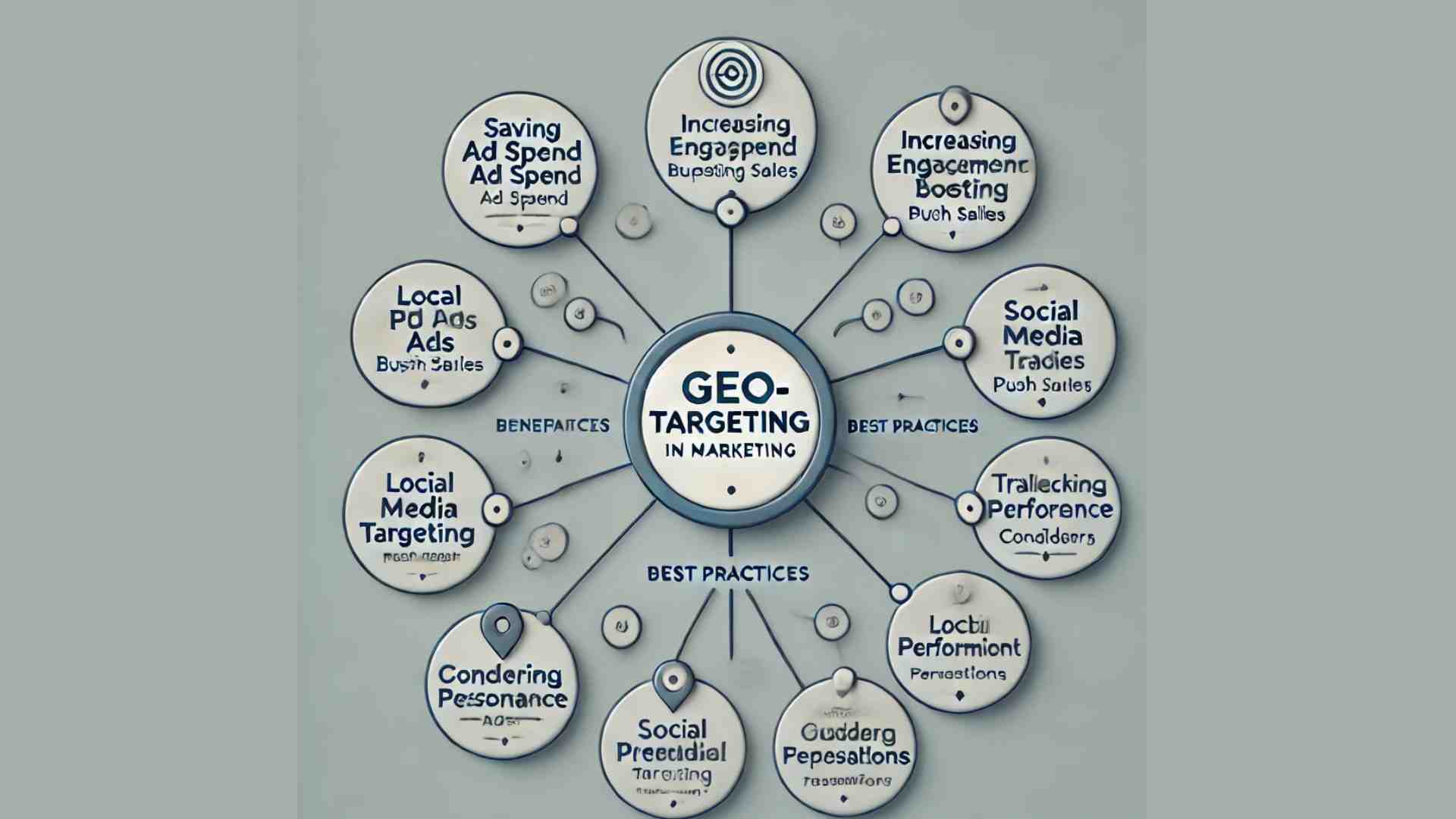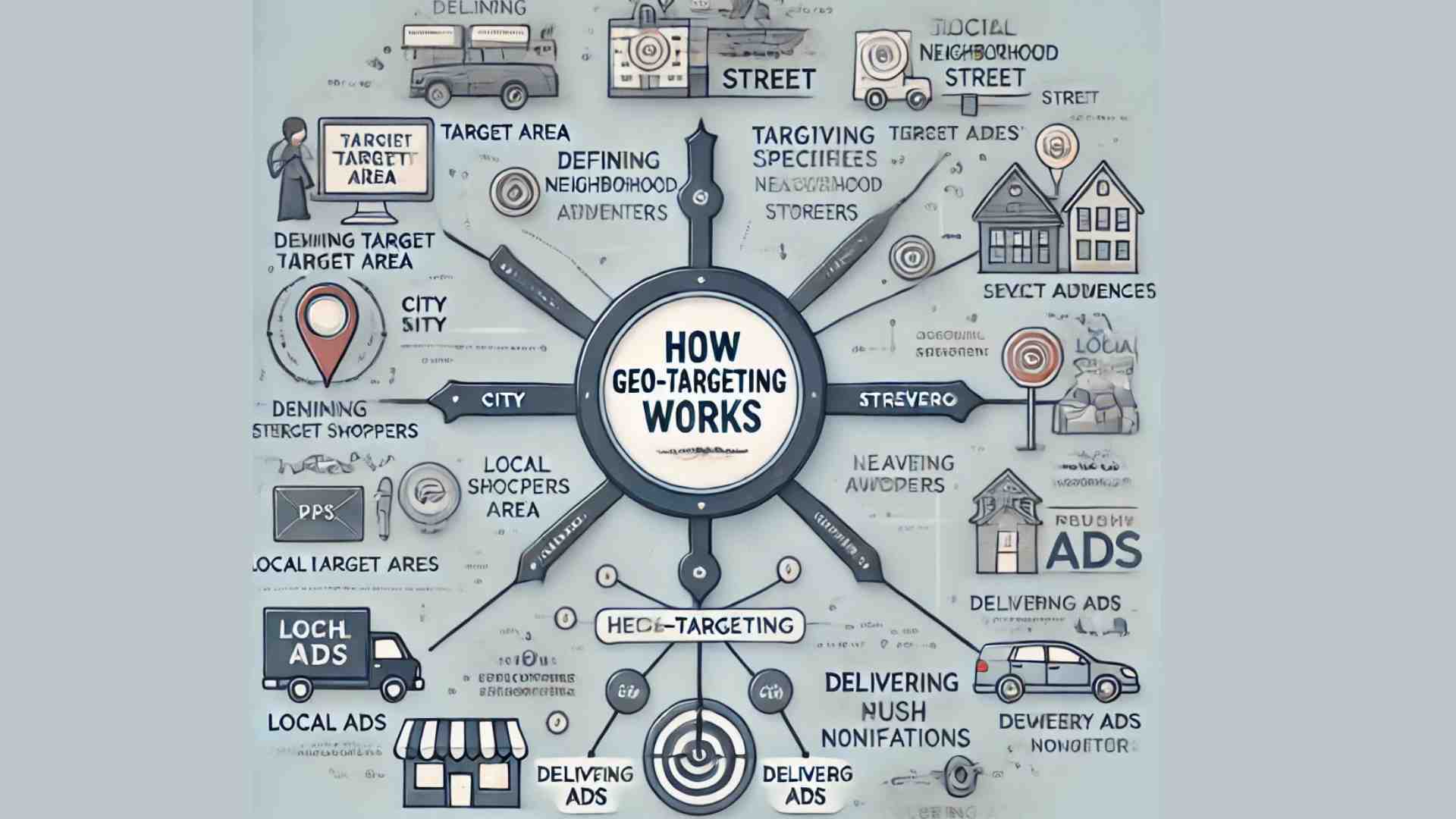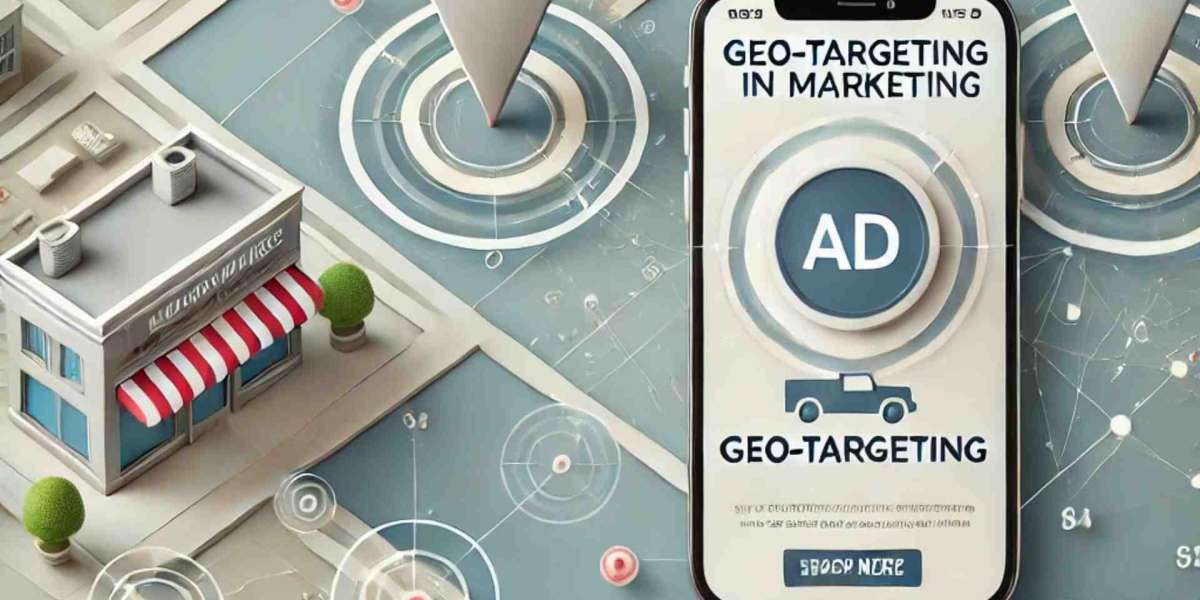Imagine running an ad campaign and knowing everyone who sees it is genuinely interested in your offer. No wasted clicks, no irrelevant traffic—just real potential customers. Sounds like a dream, right? That's precisely what geo-targeting can do for you.
In today's fast-moving digital world, businesses can't afford to market to anyone. The secret to real success lies in reaching the right people at the right time and place.
What Is Geo-Targeting, and Why Should You Care?
Geo-targeting is a marketing strategy that allows businesses to show users ads, promotions, or content based on their location. Instead of casting a wide net, it lets you focus on specific areas- a city, neighborhood, or even a street.
Think about it—why advertise a local bakery to people who live three states away? Or promote an event in New York to someone in California? Geo-targeting ensures that your digital marketing efforts go to those within reach.
How Geo-Targeting Works in Real Life
Let's say you own a small coffee shop in Austin, Texas. You're launching a new seasonal drink and want to get the word out. Instead of wasting money on ads that reach people nationwide, you use geo-targeting to push ads specifically to those within a 5-mile radius of your shop.
Even better, you can narrow it down further. You may only want to target people who visit nearby gyms, office buildings, or universities. That way, you're not just reaching people in the area but reaching those most likely to stop by for a coffee.
This isn't just a theory. Businesses worldwide use this strategy daily to drive foot traffic, increase sales, and build brand awareness in their local markets.
The Key Benefits of Geo-Targeting

Cuts Out Wasted Ad Spend
Why pay for clicks from people who will never buy from you? Geo-targeting ensures your marketing budget is spent wisely, focusing only on areas where your customers are.
Boosts Local Engagement
People love supporting local businesses. When you tailor (not using the banned word) your ads to specific communities, you create a stronger bond with them.
Increases Foot Traffic and Sales
Let's say a clothing store runs a special promotion for customers within a 2-mile radius. A person walking nearby sees the ad, decides to drop in, and buys something. That's geo-targeting in action.
Improves Relevance and Customer Experience
People respond better to ads that feel personal. A well-placed ad about an upcoming farmers market in a neighborhood newsletter is far more effective than a generic ad sent nationwide.
Innovative Ways to Use Geo-Targeting in Your Business

Local PPC Ads
Pay-per-click (PPC) campaigns on platforms like Google Ads and Facebook allow businesses to set up location-based ads. If you run a home cleaning service in Miami, you can ensure your ads only show up when people in Miami search for "home cleaning near me."
Mobile Push Notifications
Have you ever walked past a store and suddenly received a notification about a discount? That's geo-targeting at work. Many businesses use mobile apps to send location-based promotions to nearby customers.
Social Media Targeting
Platforms like Facebook and Instagram marketing allow you to create ads that appear only in specific locations. If you're a restaurant owner offering a weekend brunch deal, you can show your ad only to users within a few miles of your location.
Customized Content for Different Locations
Not all audiences are the same. A fitness brand might market differently in Los Angeles than in Chicago. Geo-targeting helps businesses craft region-specific messages that feel more relevant to their audience.
Special Offers for Local Events
Imagine a hotel offering a discount during a big sports event in town. Fans coming for the game see the ad and book a stay. That's the power of localized marketing.
How Geo-Targeting Saved My Ad Budget
I helped a friend run ads for his new pizza place a few years ago. At first, he targeted an entire city, but the results were disappointing. We adjusted the settings to focus only on neighborhoods within a 3-mile radius.
The difference? Almost overnight, more people started calling for takeout. Walk-ins increased, and customers mentioned they saw the ad while nearby. That minor tweak made all the difference.
Mistakes to Avoid with Geo-Targeting
Going Too Broad or Too Narrow
Targeting an entire state may not be effective, but neither is setting a radius so small that hardly anyone sees your ad. Finding the right balance is key.
Ignoring Seasonal Trends
A beachwear brand might get better results targeting coastal areas in the summer rather than year-round. Understanding when and where your audience needs you is crucial.
Not Tracking Performance
If you don't monitor your results, you won't know what's working. Use analytics tools to measure the effectiveness of your geo-targeting campaigns.
If you want to reach more of the right people, reduce wasted ad spend, and improve engagement, geo-targeting is a strategy worth trying. Whether you run a small shop or an online business with location-based services, this approach can significantly improve your results.
FAQs
1. What is geo-targeting in marketing?
Geo-targeting is a strategy that delivers ads or content to users based on location. It helps businesses reach the right audience in specific areas, improving engagement and conversions.
2. How does geo-targeting help businesses?
It reduces wasted ad spend, increases foot traffic, and makes marketing more relevant by focusing on potential customers nearby.
3. Can small businesses use geo-targeting?
Yes! Local shops, restaurants, and service providers can use geo-targeted ads to attract nearby customers affordably.
4. What platforms support geo-targeting?
Google Ads, Facebook, Instagram, and mobile apps offer geo-targeting options for advertising.
5. How can I measure geo-targeting success?
Track ad performance, engagement rates, and customer responses using analytics tools like Google Ads reports.














